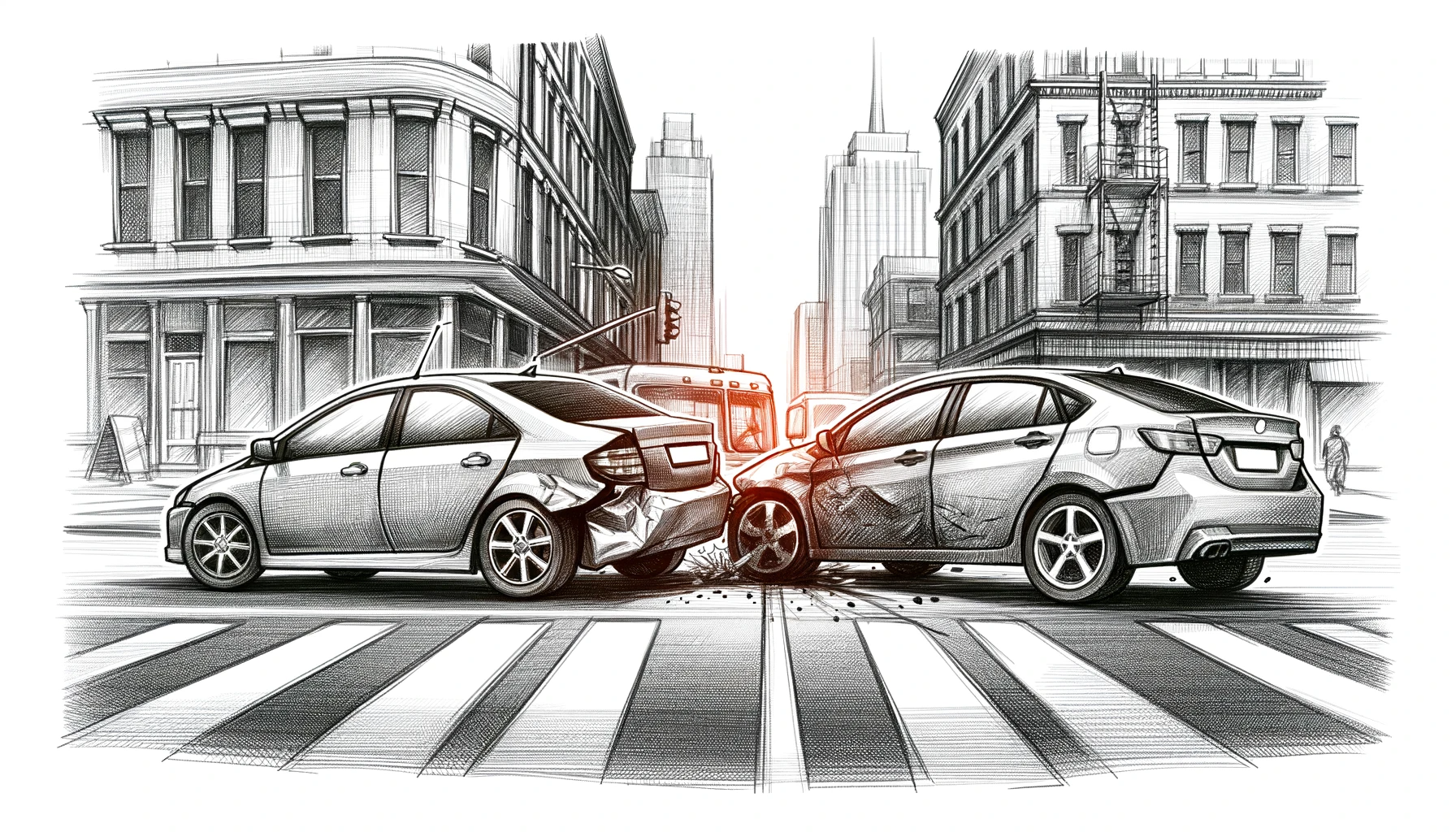Middle Tennessee’s highways and streets see tens of thousands of vehicles every day, from family cars to large trucks. Among the common types of accidents, rear-end collisions stand out for their frequency and impact. In this first post of our series, ‘The Anatomy of Common Accidents,’ we delve into the causes, consequences, and prevention strategies of rear-end collisions.
Before we get started, if you’ve been involved in an accident and need guidance, don’t hesitate to call Stillman & Friedland at 615-244-2111 for a free, confidential consultation. We’re also available through our live chat and online contact form. Let’s explore how to stay safer on the roads together.
What Causes Rear-End Collisions?
Rear-end collisions occur when one vehicle crashes into the back of another. Several factors contribute to these accidents:
- Distraction: Texting, eating, or any activity taking the driver’s focus off the road is a leading cause.
- Tailgating: Following too closely doesn’t leave enough room to stop safely.
- Speeding: Higher speeds increase stopping distance.
- Weather Conditions: Rain, snow, and fog can reduce visibility and increase braking distance.
- Sudden Stops: Abrupt braking can catch trailing drivers off guard.
The Impact of Rear-End Collisions
The severity of these accidents can range from minor fender benders to serious crashes involving multiple vehicles. Common consequences include:
- Whiplash and other neck injuries.
- Back and spinal injuries.
- Facial and head injuries due to airbag deployment.
- Psychological trauma, such as anxiety or PTSD.
How to Prevent Rear-End Collisions
Prevention is key to reducing the risk of rear-end collisions. Here are some tips:
- Maintain a Safe Distance: Follow the 3-second rule. Keep at least three seconds between you and the car in front of you as a general rule. A 3-second space between you and the vehicle in front of you will allow enough time to react to unexpected vehicles or hazards on the road. Not maintaining a safe distance leaves you with no time to respond if the driver in front of you does anything unexpected.
- Stay Alert: Being attentive is crucial when driving. This means not only watching the road ahead but also being aware of what’s happening around you. Avoid distractions like using your phone, eating, or fiddling with the radio. Being alert helps you anticipate sudden stops, changes in traffic flow, or obstacles in the road. Remember, your reaction time is a critical factor in avoiding collisions. Quick and appropriate responses can often be the difference between a near-miss and a rear-end collision.
- Drive According to Conditions: Your driving style should adapt to the conditions of the road. In rainy, foggy, or icy conditions, reduce your speed and increase your following distance. Wet or slick roads can significantly increase your stopping distance. Also, in heavy traffic, be prepared for frequent stops and starts. By adjusting your speed and driving style to the conditions, you reduce the risk of rear-end collisions caused by sudden braking or loss of control.
- Regular Vehicle Maintenance: Keeping your vehicle in top condition is essential for safe driving. Regularly check your brakes to ensure they are responsive and in good working order. Faulty brakes can significantly increase your stopping distance, raising the risk of rear-end collisions. Also, make sure your tail lights and brake lights are functioning correctly. These lights signal your intentions to drivers behind you, allowing them to react accordingly. Regular maintenance not only keeps your vehicle safe but also communicates vital information to other road users, thereby preventing accidents.
These proactive measures form a comprehensive approach to minimizing the risk of rear-end collisions. By maintaining a safe distance, staying alert, adapting to road conditions, and ensuring your vehicle is well-maintained, you play a vital role in making the roads safer for everyone. Remember, driving responsibly is not just about protecting yourself; it’s about contributing to the safety of all road users.
What to Do After a Rear-End Collision
If you’re involved in a rear-end collision, follow these steps:
- Check for Injuries: Safety comes first. Check yourself and others for injuries.
- Move to Safety: If possible, move vehicles to a safe area to avoid obstructing traffic.
- Exchange Information: Share contact and insurance details with the other driver.
- Document the Scene: Take photos and note down details of the accident.
- Report the Accident: Notify the police, especially if there are injuries or significant damage.
- Seek Medical Attention: Even if you feel fine, some injuries may appear later.
- Contact Stillman & Friedland Attorneys: For legal advice and to understand your rights and options.
Conclusion
Rear-end collisions are a significant concern on Tennessee roads, but with awareness and preventive measures, we can reduce their occurrence. Stay alert, drive safely, and remember, if you’re involved in a rear-end collision, Stillman & Friedland are here to help. Contact our Nashville office at 615-244-2111 for a complimentary, confidential consultation.
Stay safe, Nashville. Together, we can make our roads safer for everyone.
Because we care…
Stillman and Friedland







